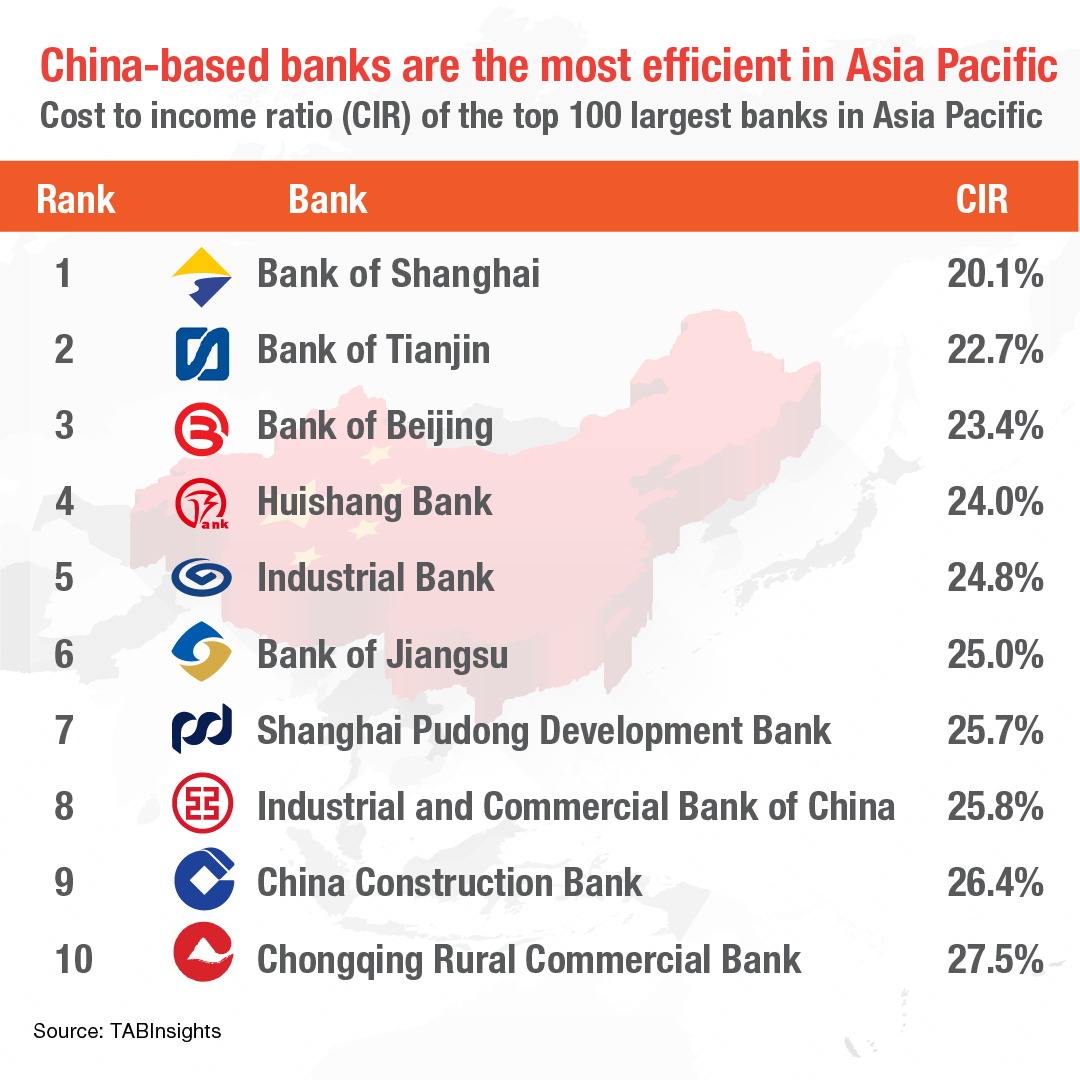Bank of Shanghai is the most efficient bank in Asia Pacific (APAC) in 2020, with a 20.1% cost-to-income ratio (CIR). The bank saw its total operating income increased by 1.8% to $7,387 million in 2020 and reported a considerably lower efficiency ratio than the aggregate CIR of the top 100 banks in APAC of 39.7%. It managed its total operating cost almost twice as more efficient as the regional average.
Following the Bank of Shanghai are Bank of Tianjin and Bank of Beijing with a ratio of 22.7% and 23.4%, respectively.
Interestingly, all the top 10 most efficient banks in Asia Pacific are from China. Jointly, Chinese banks recorded a CIR of 31.1%. This efficiency is largely attributed to the growth in their operating income and relatively controlled operating costs, despite the prevailing economic headwinds.
Since the People's Bank of China cut reserve requirements in 2018, Chinese banks have been able to issue more loans to the public. The expansionary monetary policy aided the domestic economy, as well as the financial industry to withstand the pandemic. On average, the top Chinese banks boosted their net lending by 14.82%, which led to a 3.95% increase in their operating income in 2020.
In 2020, digital transformation facilitated a considerable expansion of inclusive financing. The total capital investment in fintech-related initiatives by the banking industry reached RMB 207.8 billion ($32.7 billion), representing a 20% year-on-year increase. The adoption of fintech not only cut Chinese banks’ infrastructure and overhead costs but customer acquisition costs as well.
For a full ranking of Asian Banker 500 visit theasianbanker.com/ab500

































